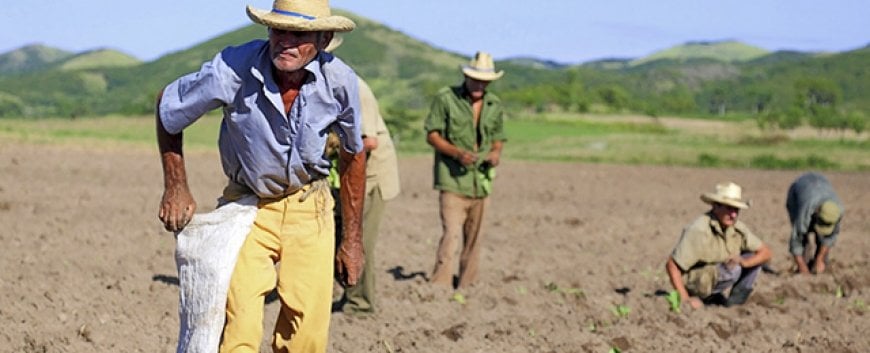Cuban Cigars: World’s Finest Smokes
When Jack Nicholson switched from cigarettes to cigars, he purportedly declared, “The only way to break a bad habit was to replace it with a better habit.” Cigars have long held an allure far beyond the Caribbean Islands, but their history begins there. Christopher Columbus and his crew encountered, and enjoyed, tobacco first when they landed the island of Hispaniola, the present-day Dominican Republic. But it was in Cuba, where they later landed and settled, that they found the indigenous people smoking cigars.
Columbus introduced tobacco to Europe, and cigar factories cropped up there and elsewhere. Cigar smoking became especially popular in the twentieth century when the famed Winston Churchill, Al Capone and Groucho Marx were seldom seen without a huge stogie. But in spite of cigars now being made around the world, Cuba is still revered for rolling some of the finest smokes.
 Cigar factory in Gibara, Holguin, Cuba
Cigar factory in Gibara, Holguin, Cuba
Unlike many cigars that blend tobaccos from various origins, Cuban cigars are made entirely from Cuban tobacco. The plants grow in a variety of regions across the island, and the location and how it’s grown affects the flavor and color of the leaves. Vuelta Abajo, in western Cuba, is recognized for growing the finest crops, but overall, Cuban tobacco is known to be strong, full bodied and supple.
Tobacco cultivation requires a few months. After harvest, the leaves are hung to cure. During this process, they change from green to brown and develop distinct flavors and qualities that contribute to the smoothness when later consumed. Once cured, the leaves are then usually sorted by size and bundled to ferment for anywhere from six months to five years. During fermentation the taste of the leaves develop further.
 Tobacco farm in Pinar del Rio, Cuba
Tobacco farm in Pinar del Rio, Cuba
A cigar requires three kinds of leaves: large high-quality leaves for the outside wrapper, whole leaves of lesser quality for an inside wrapper (called the binder, which is selected for elasticity and durability); and small or broken leaves for the inside filling. The main vein of the filler leaves must be removed to ensure that it will smoke evenly. This process is called “stripping the leaves,” and high-quality tobacco is often left to ferment again after stripping.
Cigar rolling requires nimble fingers and years of practice. The filler must be packed at the right density to burn evenly. The cylindrical wrap of the binder must be tight enough to shape the filler, yet not so tight that the cigar won’t draw. And the outside wrapper needs to enclose everything in a clean, tight spiral around the outside. Depending upon the kind of cigar, rollers meet daily quotas that range from 95 to 120 cigars.
 Famous cigar rollers at the Partagas factory in Havana, Cuba
Famous cigar rollers at the Partagas factory in Havana, Cuba
The finest Cuban cigars are rolled in Havana, but in the countryside, you can also find inexpensive, hand-rolled cigars that are longer and darker than those sold in stores. Machine-made cigars use homogenized tobacco leaf—scraps that are pulverized, mixed with vegetable gum and then rolled into sheets—for the binder and often the wrapper. If you’re headed to Cuba and want to try the best, stick with the hand-rolled smokes.
Cuban cigars get better with age, acquiring a mellower and refined taste and deeper aroma and are the very definition of happiness for some people. As the comedian George Burns once pointed out, “Happiness? A good cigar, a good meal, a good cigar and a good woman—or a bad woman; it depends on how much happiness you can handle.”
Text by Lise Waring
Photos by Robin Thom














